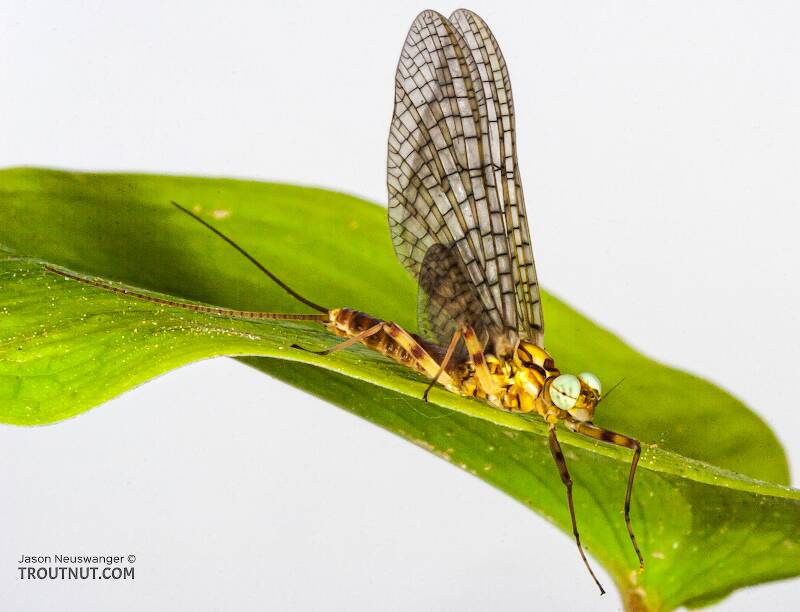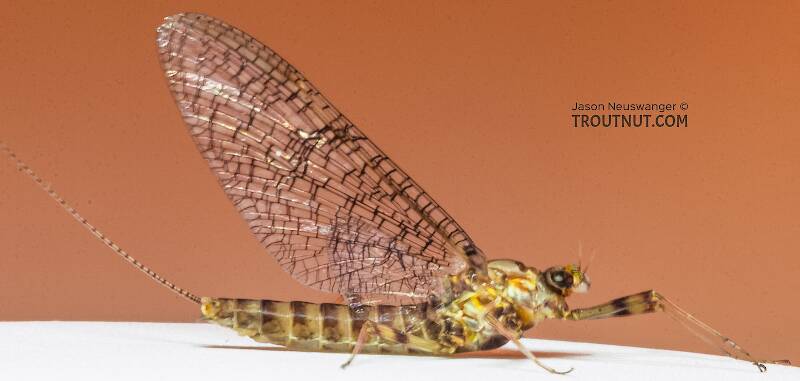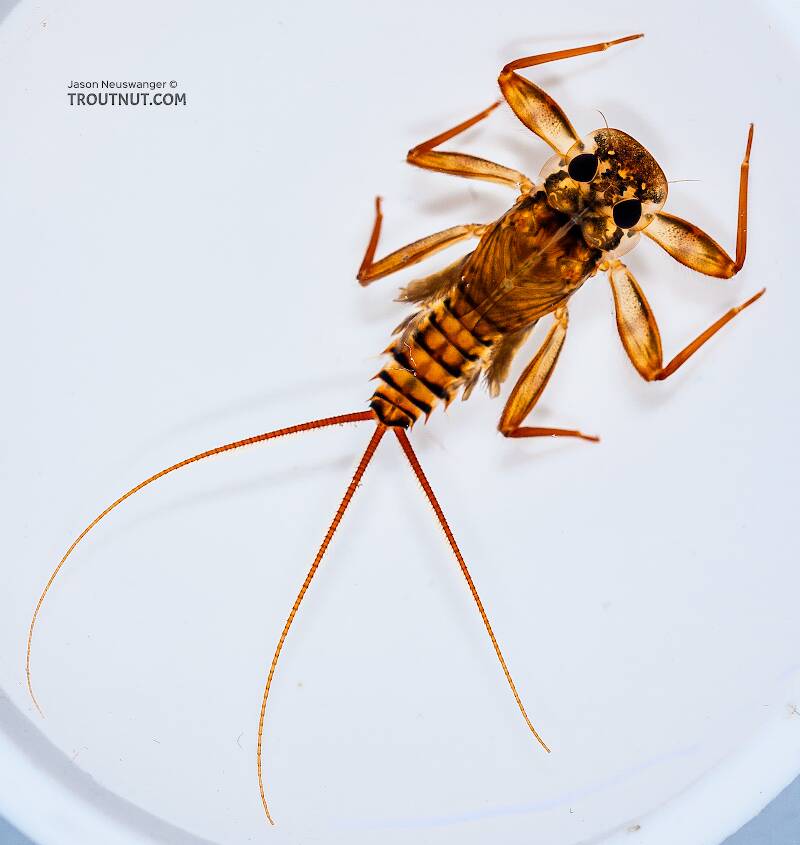
Blue-winged Olives
Baetis
Tiny Baetis mayflies are perhaps the most commonly encountered and imitated by anglers on all American trout streams due to their great abundance, widespread distribution, and trout-friendly emergence habits.
Featured on the forum

Nymphs of this species were fairly common in late-winter kick net samples from the upper Yakima River. Although I could not find a key to species of Zapada nymphs, a revision of the Nemouridae family by Baumann (1975) includes the following helpful sentence: "2 cervical gills on each side of midline, 1 arising inside and 1 outside of lateral cervical sclerites, usually single and elongate, sometimes constricted but with 3 or 4 branches arising beyond gill base in Zapada cinctipes." This specimen clearly has the branches and is within the range of that species.

Troutnut is a project started in 2003 by salmonid ecologist Jason "Troutnut" Neuswanger to help anglers and
fly tyers unabashedly embrace the entomological side of the sport. Learn more about Troutnut or
support the project for an enhanced experience here.
American Brown Duns
This common name refers to only one species. Click its scientific name to learn more.
Mayfly Species Stenonema vicarium
These are very rarely called American Brown Duns.
In the East and Midwest this is one of the most important hatches of the Spring. They are large flies which emerge sporadically, making for long days of good fishing.
This species contains the two classic Eastern hatches formerly known as Stenonema vicarium and Stenonema fuscum, the "March Brown" and "Gray Fox." Entomologists have discovered that these mayflies belong to the same species, but they still display differences in appearance which the trout notice easily. Anglers should be prepared to imitate both types.
This species contains the two classic Eastern hatches formerly known as Stenonema vicarium and Stenonema fuscum, the "March Brown" and "Gray Fox." Entomologists have discovered that these mayflies belong to the same species, but they still display differences in appearance which the trout notice easily. Anglers should be prepared to imitate both types.

I collected this mayfly on the same trip as a female of the same species. After these photos it molted into a spinner. This is the form of Stenonema vicarium which anglers call the "Gray Fox."
See 17 more specimens...
References
- Baumann, Richard W. 1975. Revision of the Stonefly Family Nemouridae (plecoptera) : a Study Of The World Fauna At The Generic Level. Smithsonian Contributions to Zoology undef(211): 1-74.



